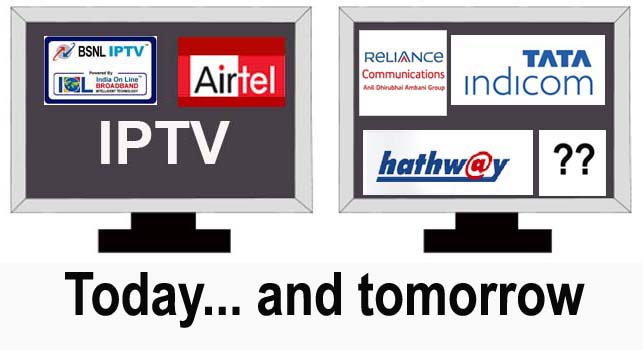January 26, '09; BANGALORE:
This may well be the year when Indians in large numbers will get their daily dose of television infotainment, the Internet way. Two weeks after BSNL's IPTV launch in select cities, Airtel announces triple play digital TV in Delhi region.
The State-owned Bharat Sanchar Nigam Ltd (BSNL), announced nation-wide launch of Internet Protocol-driven TV (IPTV) in the last days of 2008, offering 140 channels and a movie library of Indian and international titles. The service could be accessed either by an IPTV platform or a broadband cable connection and has become available where ever BSNL currently offers broadband services.
On January 19, Bharti Airtel announced the launch of its own IP-driven digital TV services, bundling telephone, broadband Internet and TV on a single line, what the industry calls Triple Play. Initially available in and around the national capital region, that is, Delhi, Gurgaon and Noida, Airtel is expected to extend its services rapidly across the country. Its offering touts features like interactive services, time shift TV with auto-record and a large number of movies on demand library. Most of these features are familiar to customers of the direct from satellite dish-based TV services; the IP advantage being a simultaneous access to Internet features like browsing.
BSNL has deployed the IPTV solution from the (California, US)-based UTStarcom with local Gurgaon-based optic fibre player Aksh Optifibre.
BSNL's tariffs call for Rs. 1500 (set top box); Rs 600 (installation) and a fixed monthly set top box hire (Rs. 100) with the basic IPTV monthly subscription pegged at Rs. 250. There are additional charges of between Rs 150 and Rs 450 per month for various video (movie) packages.
Airtel offers 135 channels of TV and a 256 KBPS broadband connection with unlimited download for Rs. 999 a month and 117 channels with 2.5 GB of download through a 256 KBPS broadband connection for Rs. 599 a month.
Reliance Communications has conducted its own trial runs of IPTV and can be expected to announce its own IP-driven television/ triple play offerings in 2009 -- as can Tata Teleservices as well as multi-state digital cable and broadband players like Hathway.
In areas of high potential customer base -- like Bangalore -- 2009 will also see the entry into IPTV of legacy multi service operators like Atria Convergence Technologies who already have a good base of digital cable TV users.
The number of Indian households with a TV set is estimated to be around 120 million -- two thirds of these with a cable connection. The number of broadband subscribers in India -- those who are equipped to benefit from IPTV -- is much smaller, just over 5.5 million, and growing at about 250,000 a month. So IPTV is still very much a minority technology today.
However Gartner (Sep 2008) has predicted that "worldwide subscriptions to Internet Protocol television services will increase from 12 million in 2007 to almost 55 million in 2012 when 3% of the world's households will have IPTV". With cellular 3G, WiMAX and broadband, all set to impact Indians this year, chances are the 'garam hava' or hot breeze of IPTV, too will waft across Indian households in the months to come.
(Footnote: Gartner defines IPTV as the use of a carrier-based managed IP broadband network to deliver television and video content services to the end-user's TV set using a set-top box, and delivering picture quality at least equivalent to existing pay-TV or free-to-air services. Content delivered over the internet or delivered only to a PC is not included. Video content can be broadcast-style pay-TV, video on demand (VOD) or other video interactive services.)
